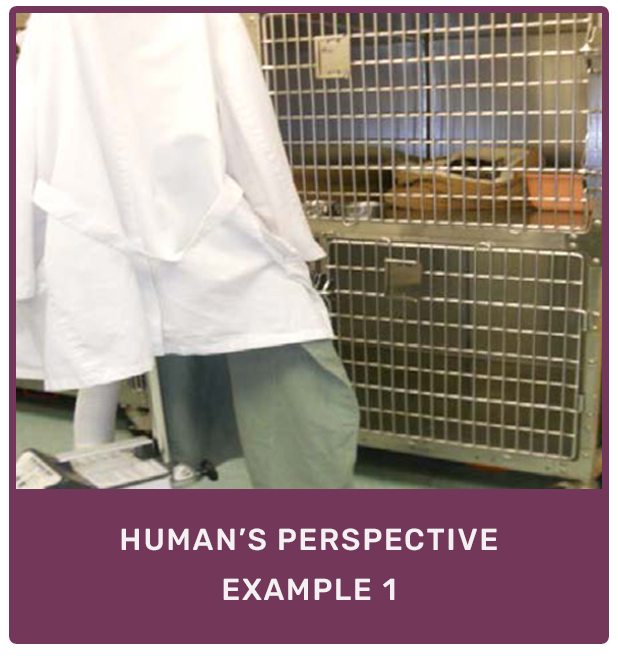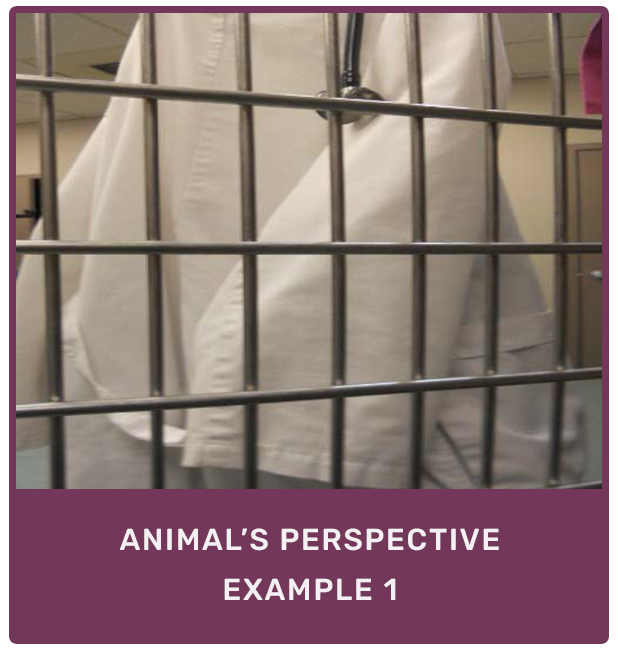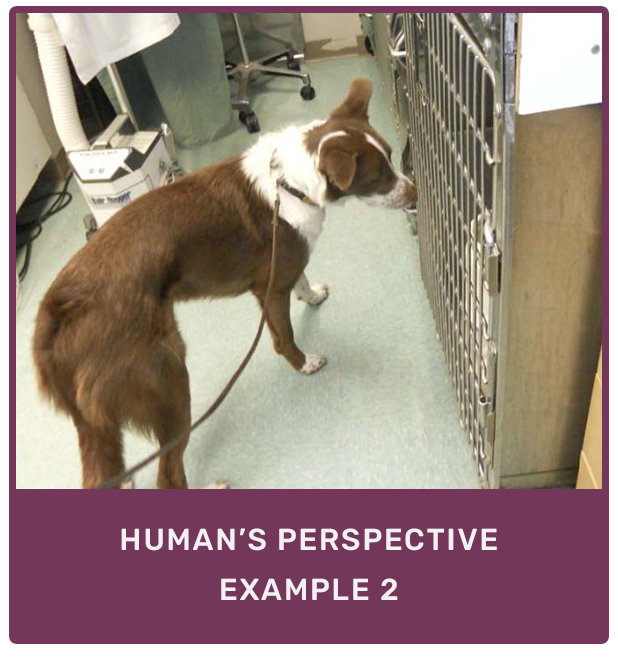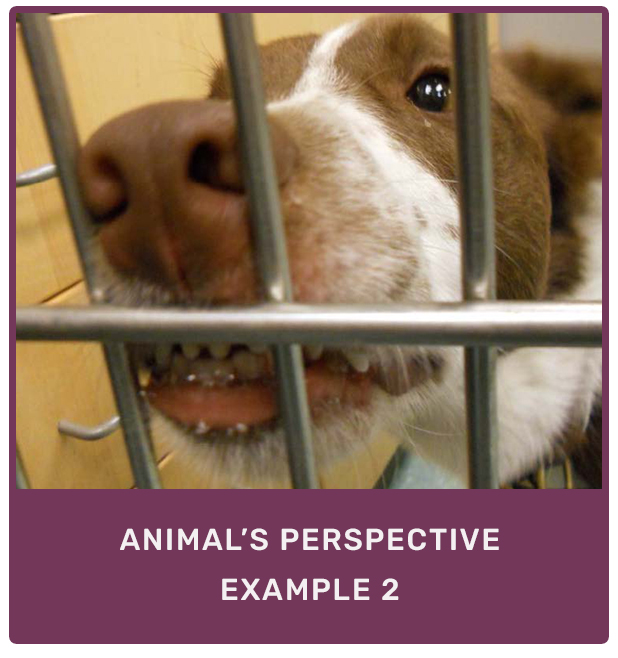Page12
Perspective
In addition to just color differences, think about the perspective from which animals see things and how your patients might see things in your hospital as compared to what you see. In the images below, you can clearly see the difference between human and animal perspectives.
A patient that has entered the clinic may already be anxious and showing signs of behavior change. Now, think about how much more anxious this patient might become after being put into the kennel. Something as inconspicuous as a lab coat can become an imposing figure. The patient is likely becoming more anxious and more fearful based on the strange sights in the hospital.




Images courtesy of Monique Feyrecilde
Now think about that same animal that is in the kennel with the lab coat right in front of the kennel. As you can see the view from the kennel has opened up (Example 2) and is less restricted – but the patient in the kennel has a visitor from another patient. From the human’s view, this looks innocent – but take another look at what the animal might be seeing. Would this create more anxiety and would this lead the animal in the cage to possibly even turn aggressive?
As you can clearly see from these examples, the vision and view from the animal’s perspective is very different than that from which we see as humans. This same thought process can be applied in the home environment as well. Visual differences might be causing stress for the pet and yet may not be immediately noticeable to the pet owner. When the pet reacts to those visual stressors, the pet owner may perceive a behavior problem and react in a manner that is not conducive to a positive HAB.

